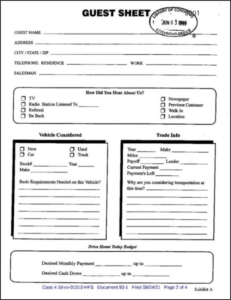The US Court of Appeals for the Fourth Circuit reversed-in-part, vacated-in-part and affirmed in part a district court decision that found an internet service provider liable for $1 billion in damages for vicarious and contributory copyright infringement. Sony Music Entm’t., et al. v. Cox Commc’ns, Inc., Case No. 21-1168 (4th Cir. Feb. 20, 2024) (Harris, Rushing, JJ., Floyd, Sr. J.) (per curiam).
Sony Music along with 52 other music companies filed suit against Cox Communications in July 2018, alleging both contributory and vicarious liability based on copyright infringement by Cox’s customers. Sony argued that Cox knew that some of its customers used its service to download or distribute songs over the internet without permission but chose not to cancel their subscriptions. The Digital Millennium Copyright Act (DMCA) created a safe harbor for internet service providers in such circumstances but a prior case against Cox held that it did not qualify for the safe harbor because “its repeat infringer policy as implemented was inadequate under the DMCA.” In the present case, the jury found Cox liable for vicarious and contributory infringement of all 10,017 copyrighted works alleged to have been infringed and found that Cox’s infringement was willful. The jury awarded Sony more than $99,000 per work infringed, totaling $1 billion in statutory damages. Cox appealed.
The appeal garnered noteworthy amici in support of both sides. Cox was supported by the Electronic Frontier Foundation, the American Library Association and the Center for Democracy and Technology, among others. Sony was supported by the National Music Publishers’ Association, the Songwriters of North America, the Nashville Songwriters Association International and the Copyright Alliance.
Cox raised many questions of law concerning the scope of secondary liability and what constitutes a compilation or derivative work in the digital age. The Fourth Circuit upheld the jury verdict finding Cox liable for contributory copyright infringement, rejecting Cox’s arguments that its service was also used for lawful activity and that its contribution must amount to aiding and abetting the infringement. The Court explained that “supplying a product with knowledge that the recipient will use it to infringe copyrights is exactly the sort of conduct sufficient for contributory infringement.” The Court concluded that the jury saw sufficient evidence that Cox knew specific users were repeatedly infringing but chose not to terminate their service.
The Fourth Circuit, however, reversed the jury’s verdict of vicarious liability, finding that Cox did not profit from its subscribers’ acts of infringement and so did not meet the legal prerequisite for that form of secondary liability. Reviewing landmark cases on vicarious liability, the Court explained that “the crux of the financial benefit inquiry is whether a causal relationship exists between the infringing activity and a financial benefit to the defendant . . . the financial benefit to the defendant must flow directly from the third party’s acts of infringement to establish vicarious liability.” Since Sony failed to show that Cox profited from its subscribers’ infringing activity, it failed to establish vicarious liability.
The [...]
Continue Reading
read more

 Subscribe
Subscribe



